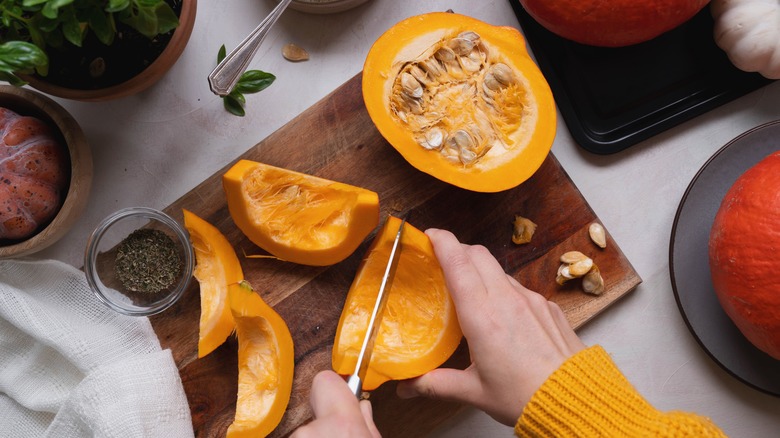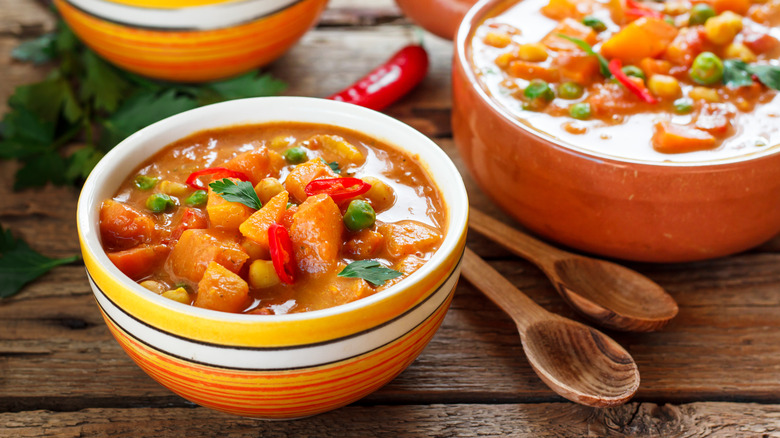Why Pumpkin Is So Prevalent In Indian Cuisine
When we imagine pumpkins today, most people think of jack-o'-lanterns on Halloween, salted and roasted seeds, and Thanksgiving pies, which are all relatively new concepts when considering the long history of the pumpkin. It is reported by the Public Broadcasting Service that this squash was domesticated in modern-day Mexico thousands of years ago. But if the pumpkin originated in central America, how did it become one of India's favorite winter foods? And how did the pumpkin make its way to India?
Ibn Battuta writes in "Indian food: A Historical Companion" about the migration of the pumpkin. Apparently, pumpkin gourds floated across the ocean centuries before the Atlantic Trade began, and deposited their seeds onto Indian soil (via The Hindu). Battuta says that there have been reports of the pumpkin growing in India since 645 A.D. and since then it has been incorporated into the country's cuisine due to its nutrition and sweet profile. According to HealthLine, the flesh of the fruit is packed with a variety of vitamins and minerals, and even the seeds are edible — which means there is very little food waste when it comes to the pumpkin. These nutritional benefits and the plant's ability to survive the cold are a few of the reasons squash was adopted into Indian cuisine.
A special treat and daily delight
The pumpkin plays an important role in religious holidays in India. It is known to be enjoyed during celebrations like Makar Sankranti, where the fruit is made into pumpkin curry and sweet pumpkin raitha (via The Hindu). Pumpkin is considered a cold-weather plant which is why it is so popular during specific seasons (per Office Holidays).
According to The Belly Rules the Mind, pumpkin (known as "kaddu" in India) is often used in Kayastha regional celebrations where it is cut into cubes and served with onions and spices as a savory, tangy dish accompanied by potatoes and flatbreads. Kaddu is meant to be both an enrichment for the body and the soul and is even accessible to those fasting for holidays. Those who are observing fasting diets simply remove onions and add only a little salt.
Kaddu recipes traditionally use orange pumpkin but South Indian dishes use white pumpkin as an ingredient. White pumpkins, though they look dissimilar from their orange companions, taste nearly the same, but white pumpkins tend to be a touch sweeter (via DMCoffee). Kootu is a common white pumpkin stew in South India that provides vitamins and can reduce blood pressure, according to Subbu's Kitchen. Even though pumpkin is a celebratory food in India, it is also enjoyed as an easy-to-make, nutrient-rich meal.

